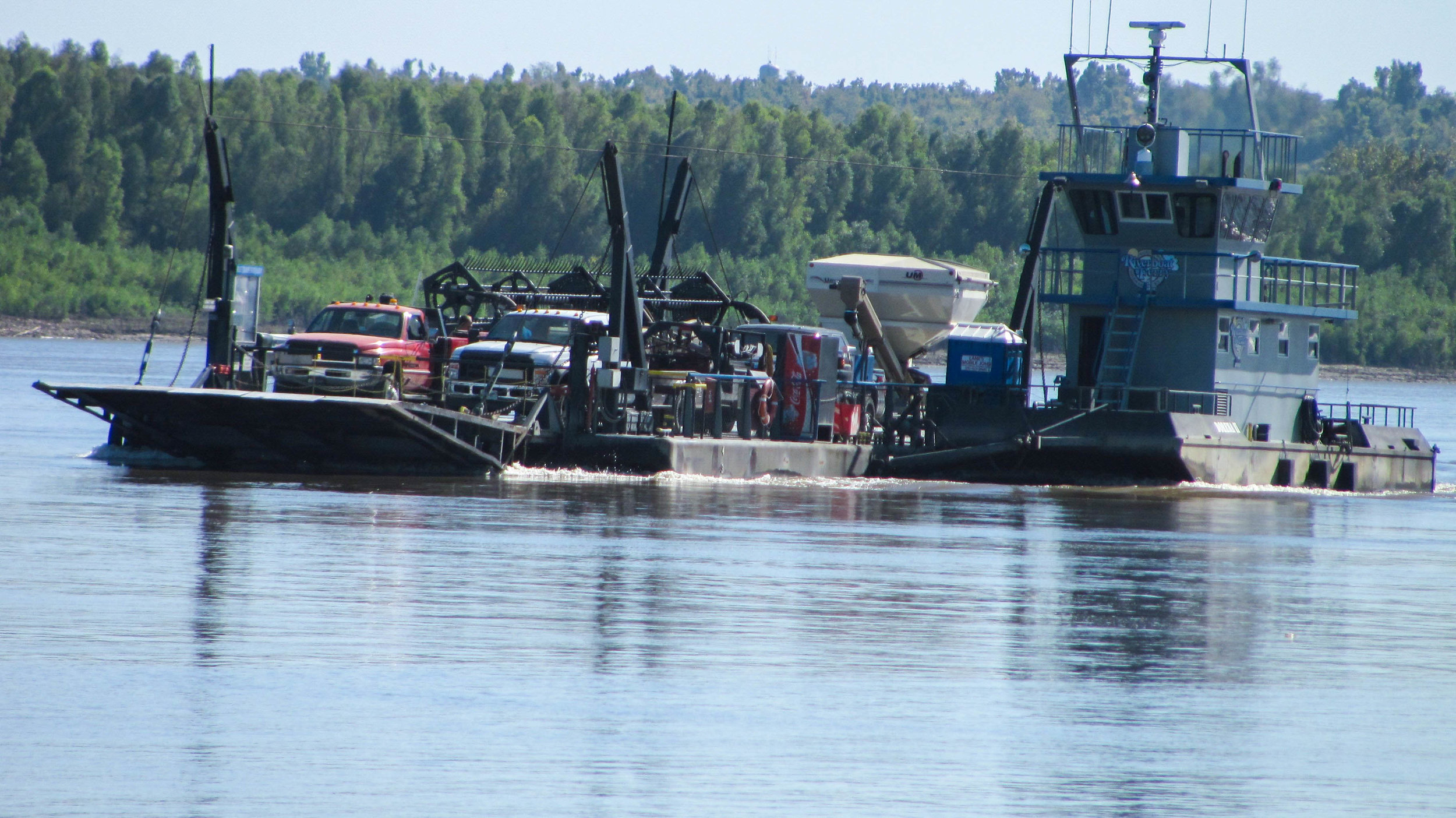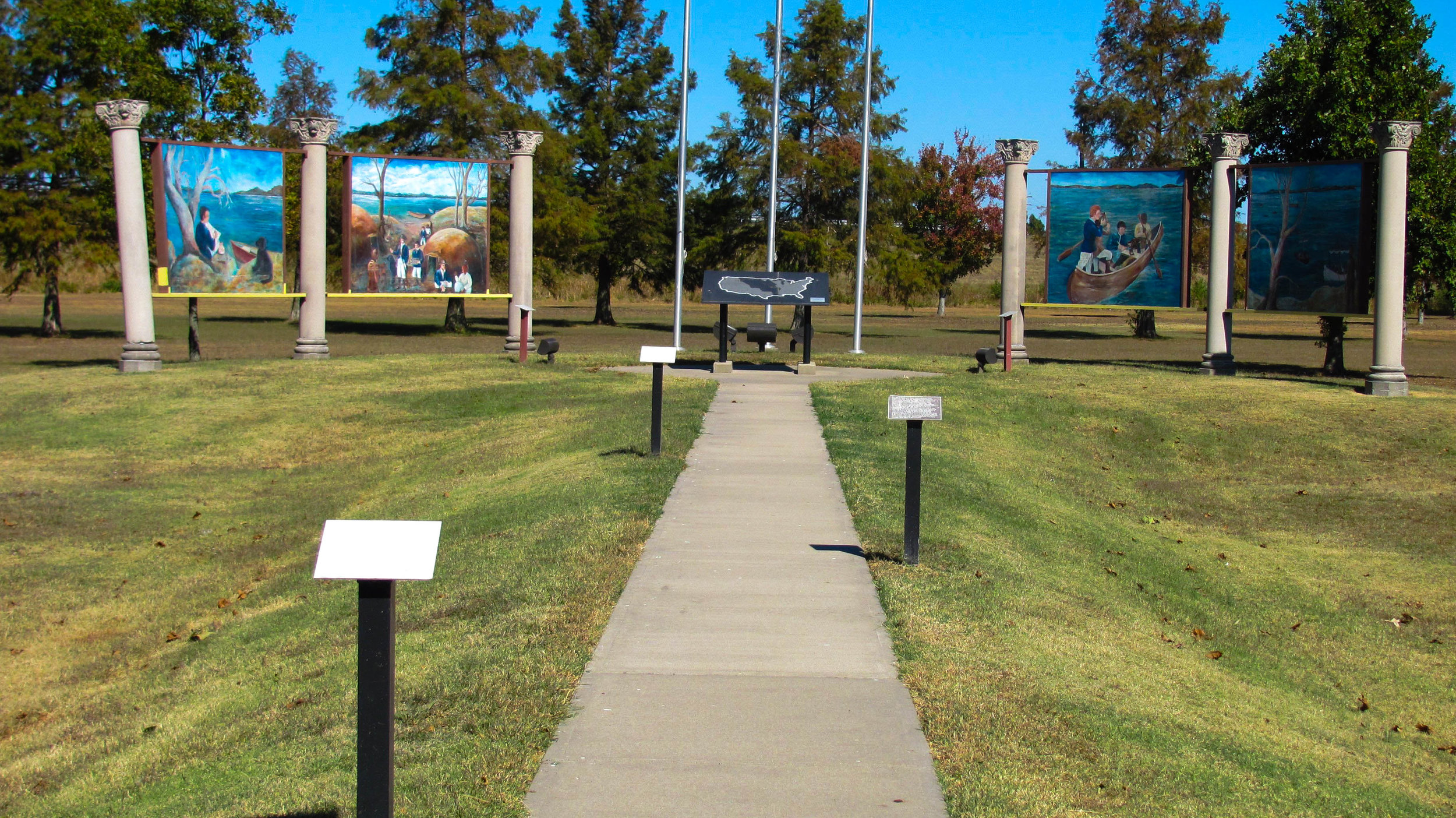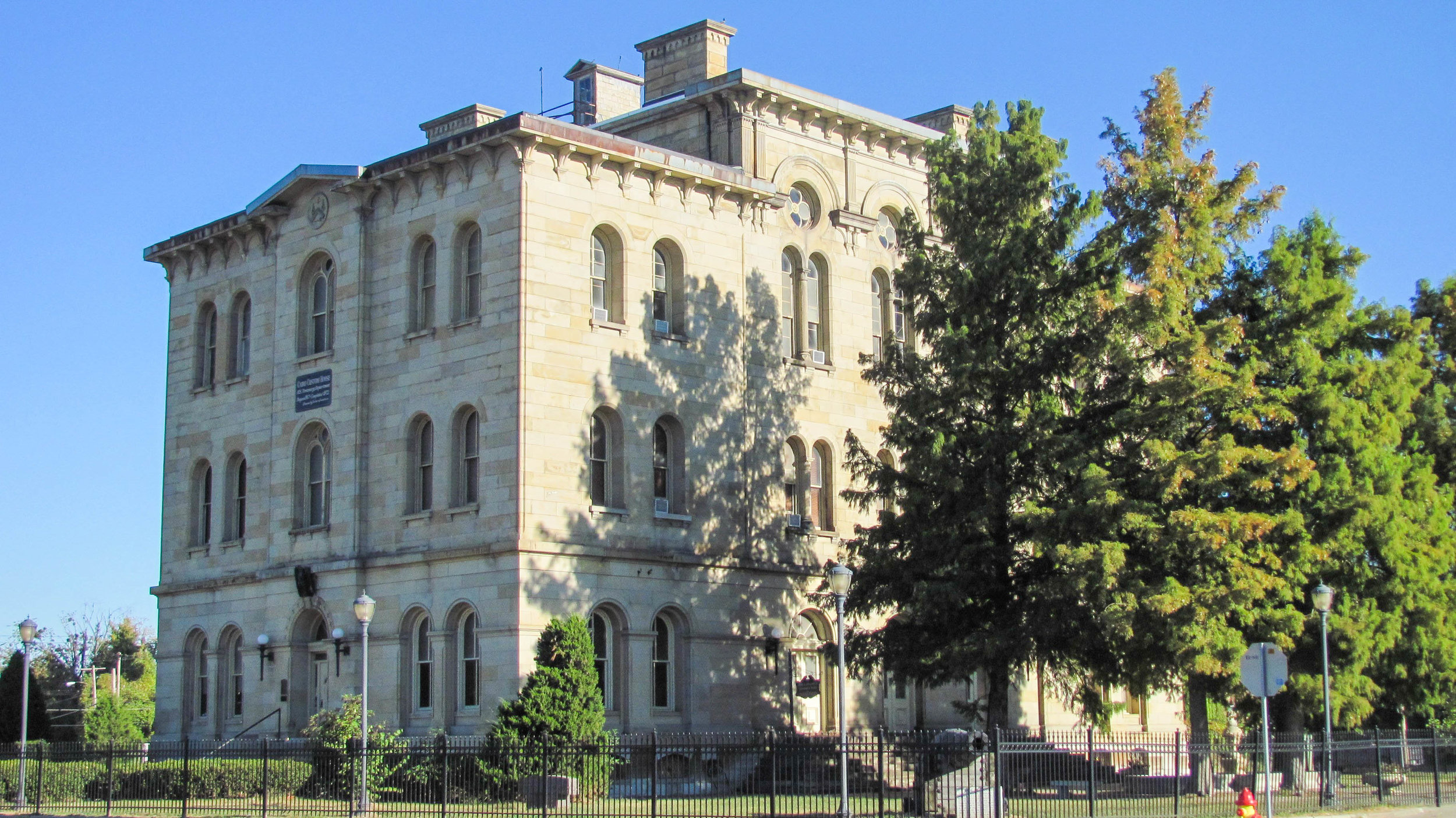Visitors Guide to Attractions
Mississippi County, Missouri
Missouri starts to take on a Deep South flavor in Mississippi County. The Moore House and a museum dedicated to former Governor Warren E. Hearnes can be found in the town of Charleston. The past can be explored by seeing what the region looked like before being drained for farmland at Big Oak Tree State Park or by visiting the site of a prehistoric Native American village at Towosahgy State Historic Site. Visitors can ride the river by crossing the Mississippi River to Kentucky on the Dorena-Hickman Ferry.
Battle of Belmont Site
East Prairie, Missouri
A historical marker marks the approximate site of the Battle of Belmont that on November 7, 1861. It was the first combat test in the Civil War for Brigadier General Ulysses S. Grant, the future Union Army general in chief and eventual U.S. president. Grant landed troops on the Missouri side of the Mississippi River opposite the Confederate fortifications at Columbus Kentucky - known as the “Gibraltar of the West.” Grant’s troops were successful at first but were forced back onto their boats by the Confederate counterattack.
Big Oak Tree State Park
East Prairie, Missouri
Big Oak Tree State Park is an oasis of forests located in the abundance of farmland of southeast Missouri. In the 1930s, citizens of southeast Missouri began to realize that their magnificent lowland forests were about to disappear forever and began a campaign to save a large oak tree and 80 acres surrounding. The campaign attracted statewide attention and in 1938 over 1,000 acres were purchased and dedicated as Big Oak Tree State Park. Today, trees in the park are unsurpassed in the state for their size with several trees more than 130 feet tall and four trees qualifying as state champions. The park features a boardwalk that winds its way through the park past some of the park's largest trees and gives visitors a chance to view a variety of wildlife. An interpretive center explains the forest and swamp ecosystem in the park. Big Oak Lake provides 22 acres of fishing. Picnic sites, a picnic shelter, and a playground are all nestled under towering trees, which makes the park a great place for a family to spend the day.
Dorena-Hickman Ferry
Dorena, Missouri
The Dorena-Hickman Toll Ferry is one of the few remaining riverboat ferries in the United States and the only operating ferry crossing the Mississippi River between Missouri and Kentucky. A ride on the ferry provides a unique opportunity to experience the wonder and beauty of the Mighty Mississippi. The Dorena-Hickman Toll Ferry can be accessed at the end of State Highway A near Dorena, MO or Hickman Ferry Crossing off Kentucky State Highway 1354. The ferry operates during daylight hours seven days a week year round except Christmas Day.
Lewis and Clark Monument
Charleston, Missouri
Located in Henry S. Whipple Park this Lewis and Clark monument consists of six columns supporting four murals that were from the 1903 Mississippi County courthouse that burned in 1997. The nations that once laid claim to the area are represented the flags of their day including the Spanish, the French, and the U.S. flag containing 15 stars and stripes which represented the number of states during the time of Lewis and Clark. The black granite map of the continental United States indicated the journey from Pittsburgh with a gold star at the location of the First Steps in what came to be known as Bird’s Point, located approximately 12 miles east of Charleston.
Moore House
Charleston, Missouri
The Moore House is a two-and-one-half story red brick building and is a fine example of the Colonial Revival style of architecture. The Moore House was occupied continuously by family members from 1899 to 1977. When the house became vacant in 1977, James Handy Moore, namesake and grandson of the original builder, and his brother, William Bird Moore, deeded the home to the Mississippi County Historical Society, which now uses it as its headquarters. The Moore House is open for special events and functions.
Ten Mile Pond Conservation Area
East Prairie, Missouri
Ten Mile Pond Conservation Area is a 3,755-acre area that was once a lowland hardwood forest intermingled with cypress sloughs. Most of the area is flooded seasonally and was an important habitat for wintering waterfowl, furbearers, eagles, and other wildlife species. Visitors can view wildlife from the handicapped accessible Richard T. Reed Observation Platform located at the C/D parking lot. Duck and goose hunting and viewing waterfowl are the most popular outdoor activities on the area. Bald eagles are common on the area from late fall through early spring.
Towosahgy State Historic Site
East Prairie, Missouri
Towosahgy State Historic Site preserves the remains of a once flourishing Native American community. Towosahgy (tah-wah-saw-ge) is a borrowed Osage Indian word meaning “Old Town.” The site was the location of a once-fortified village and ceremonial center between 1000 and 1400 A.D. Today, all that is visible are the remains of the earthen mounds within the village area. Six of the seven mounds still exist and surround the central plaza where various civic and religious ceremonies were held. A kiosk provides interpretive information about the village and its inhabitants. A trail leads visitors to the mounds and other areas of the village where they can imagine this once-thriving culture found in this area hundreds of years ago.
Nearby Attractions
Scott County, Missouri
Culture history and nature can all be found in Scott County. The Sikeston Depot was revitalized and became the Sikeston Historical and Cultural Center containing a historic museum and an art gallery. Sikeston offers a driving tour of more than 24 magnificent homes constructed during the early 1900s. Just outside of Sikeston is the Southeast Missouri Agriculture Museum, which boasts the state´s largest collection of antique farm machinery. The General Watkins Conservation Area contains a forest type more closely resembling Appalachian than Missouri forests.
Alexander County, Illinois
Alexander County is the southernmost county in Illinois and is the site of the confluence of the Mississippi and Ohio Rivers. The rivers played a major role in the history of Alexander County and these aspects can be explored at the Cairo Custom House Museum and Magnolia Manor. Horseshoe Lake State Fish & Wildlife Area contains a 2,400 acre shallow oxbow lake which reminds visitors of the Deep South with its abundance of bald cypress, tupelo gum, swamp cottonwood trees, and wild lotus.
Western Kentucky
Western Kentucky consists of the four rural counties of Ballard, Carlisle, Hickman, and Fulton. Visitors to this region can explore history at the Carlisle County History Museum and the Barlow House Museum. Columbus-Belmont State Park, on the bluffs overlooking the Mississippi River, was the site of a Confederate fortification built during the Civil War. Today the park features a Civil War Museum, hiking trails, picnicking and camping opportunities. The Fort Jefferson Memorial Cross is a 95-foot memorial that stands high upon a bluff at the confluence of the Ohio and Mississippi Rivers that was the site of a 18th-century fort. Wickliffe Mounds is the archaeological site of a prehistoric Native American village of the Mississippian mound builders. Visitors can ride the river by crossing the Mississippi River to Missouri on the Dorena-Hickman Ferry.
For Travelers Heading Up the River
French Colonial Country
Up river of the Meeting the Ohio River region is French Colonial Country. This five county area was heavily influenced by the French fur traders who inhabited the region from 1700 to 1840. Attractions include the town of Ste. Genevieve with the largest concentration of French Colonial architecture in North America, Forts de Chartre and Kaskaskia in Randolph County, and the Cahokia complex in St. Clair County.
For Travelers Heading Down the River
The Upper Delta of the Mississippi River
The cypress swamps associated with the southern Mississippi can be experienced at Wapanocca National Wildlife Refuge and Reelfoot Lake. New Madrid’s riverfront district has several interesting museums and historical sites. Although inland, the high country along Crowley's Ridge Parkway National Scenic Byway is actually the natural western boundary of the Mississippi and features a number of state parks.
























